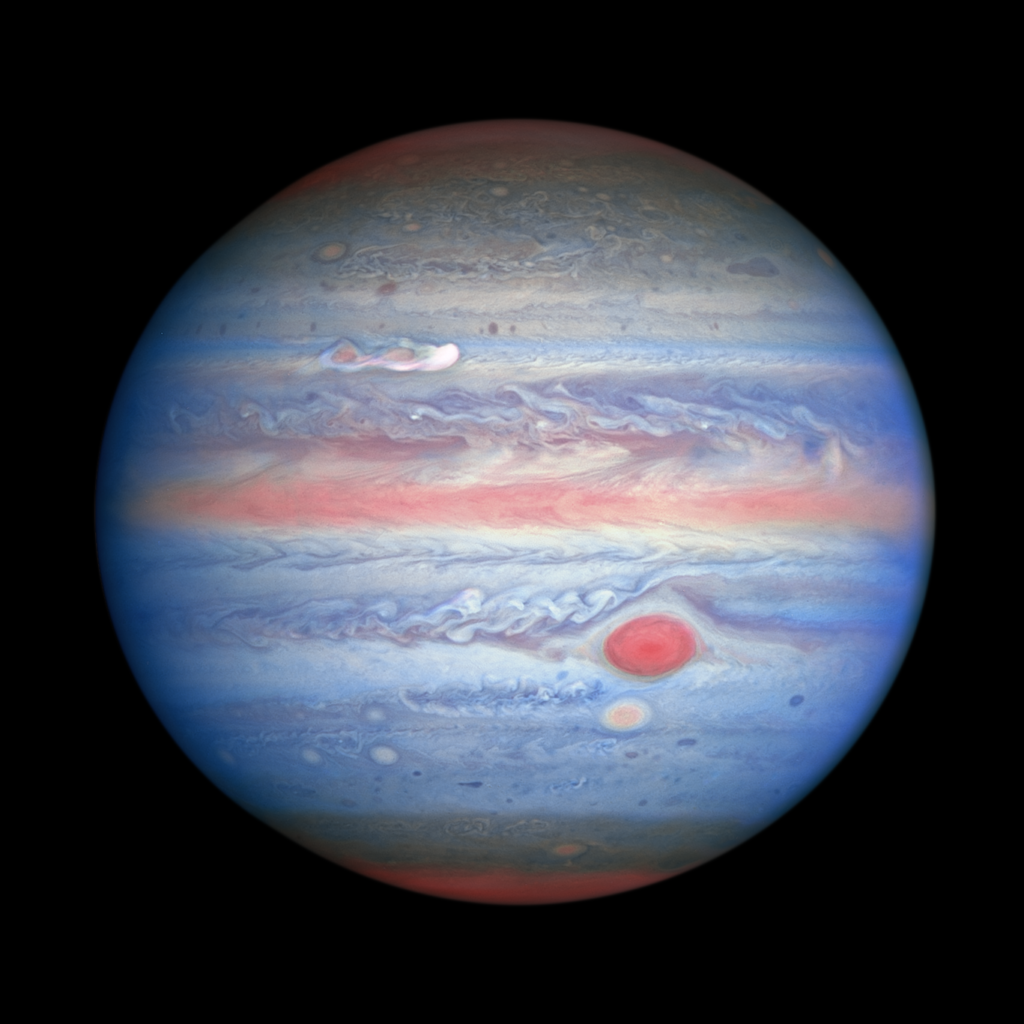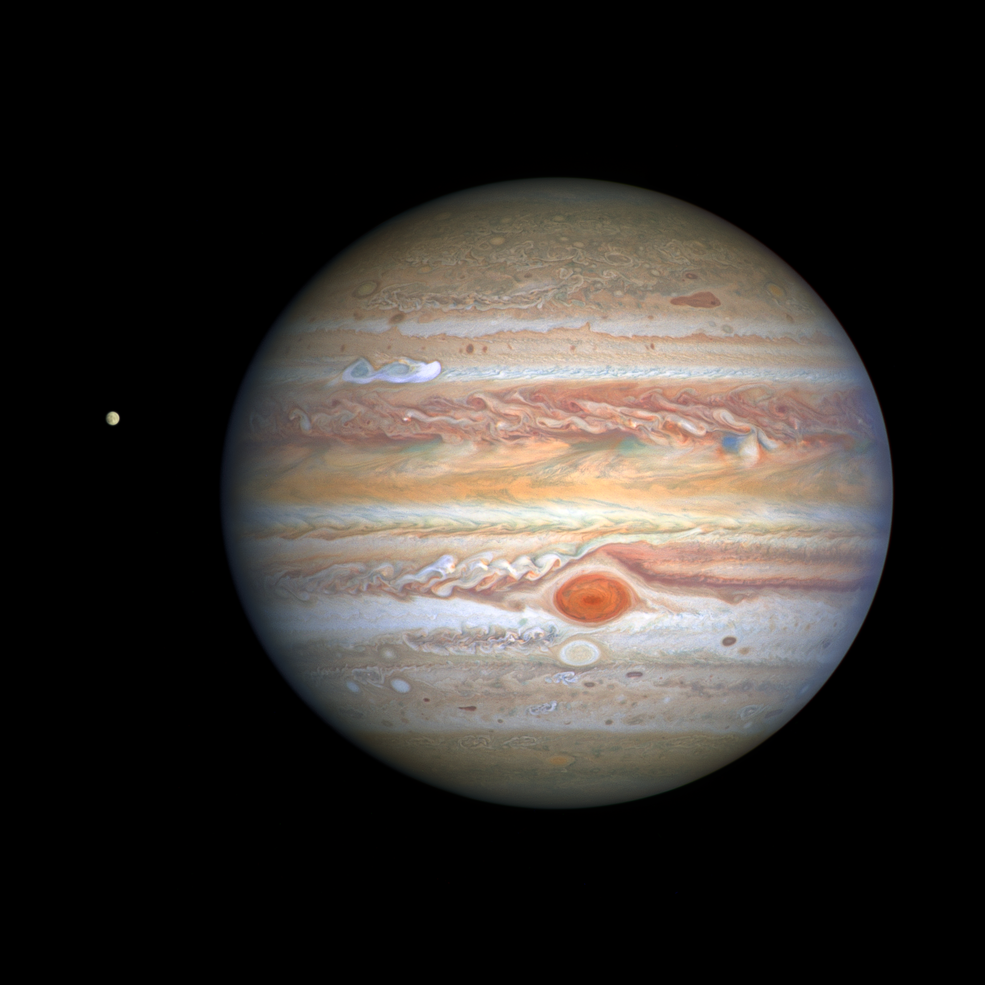In the past few years, we’ve been spoiled with some awesome Jupiter photos, and this one is no exception. This latest, pastel-colored image is so detailed it can serve as a weather report of the planet’s monstrous atmosphere.

Jupiter’s Great Red Spot takes all the spotlight when it comes to jovian storms, but while it is undoubtedly a mammoth storm, it’s far from the only one. For instance, opposite to the Great Red Spot (in the top-left part of the picture), there’s a remarkable new storm brewing.
The white stretched-out storm is already traveling around the planet at 350 miles per hour (560 kilometers per hour), despite only emerging on August 18, 2020. It’s also accompanied by two other, smaller storms at about the same latitude. According to a NASA statement, this new Hubble image “shows that Jupiter is clearing out its higher altitude white clouds, especially along the planet’s equator, where an orangish hydrocarbon smog wraps around it.”
Another notable storm is the so-called Red Spot Jr., a storm that appears just below the Great Red Spot in this image. For years, Red Spot Jr. has been fading to a shade of white after appearing red in 2006, but now it seems to be turning towards red once again.
As for the Red Spot itself, it’s still shrinking, for reasons that are not well understood. However, it still measures 9,800 miles across, which makes it big enough to swallow the Earth whole.

The icy satellite Europe is also visible to the left of Jupiter. Europe has drawn astronomers’ attention as one of the prime candidates for extraterrestrial life in our solar system. Not only does Europe have a liquid ocean under its frozen surface, but it also seems to have salt and hydrothermal vents, essentially supplying all the necessary ingredients for life as we know it.
NASA is already preparing a mission to study Europa on-site, with the Europa Clipper spacecraft set for launch sometime between 2023 and 2025. Europa Clipper will conduct detailed reconnaissance of Jupiter’s moon, looking for signs of life and sending a lander to the surface of the satellite.
Was this helpful?



